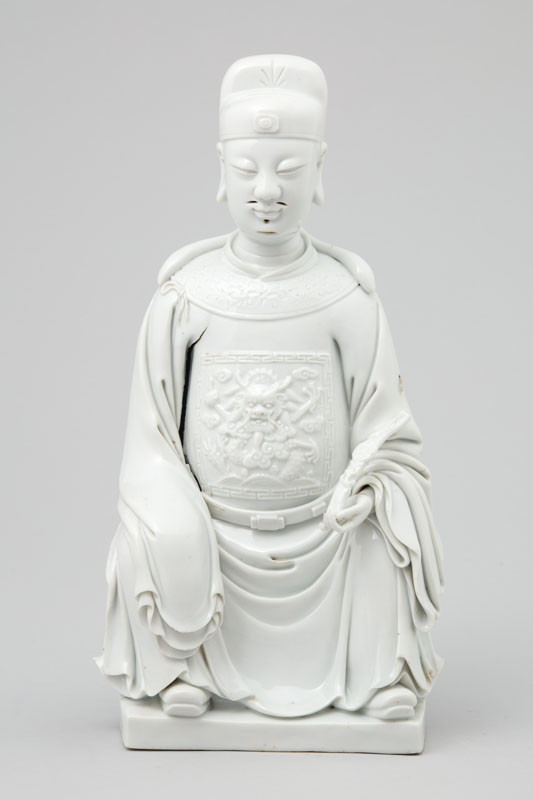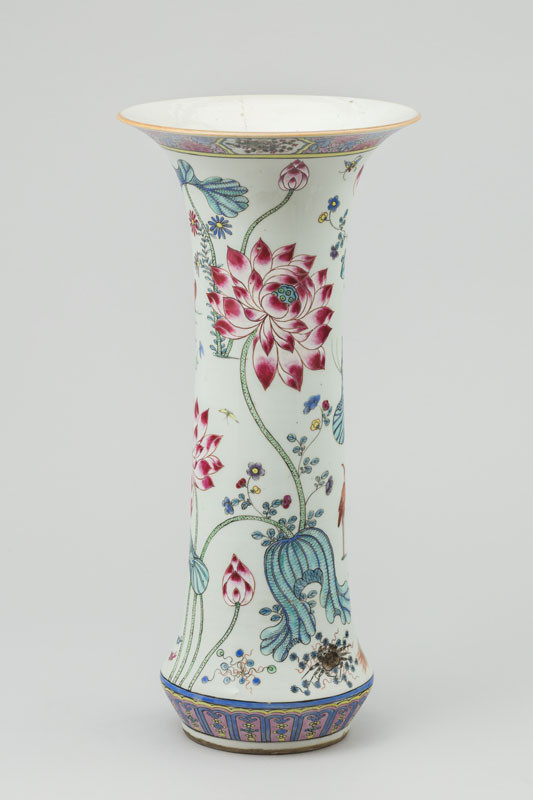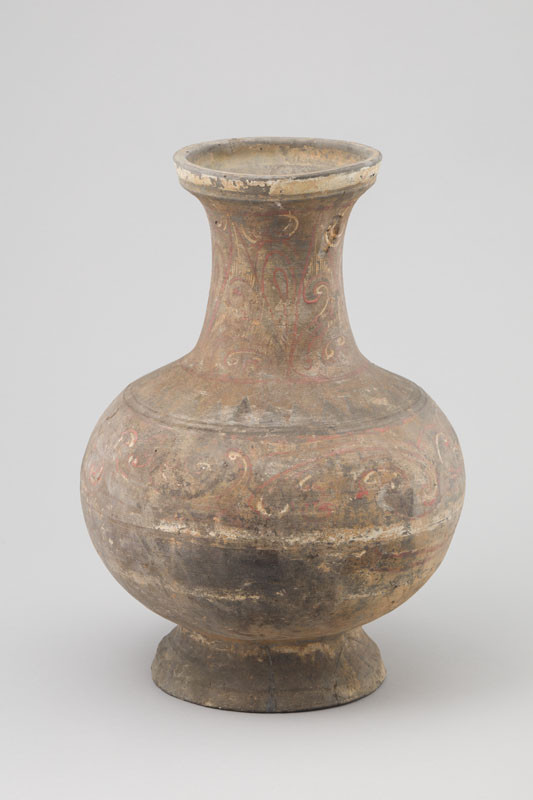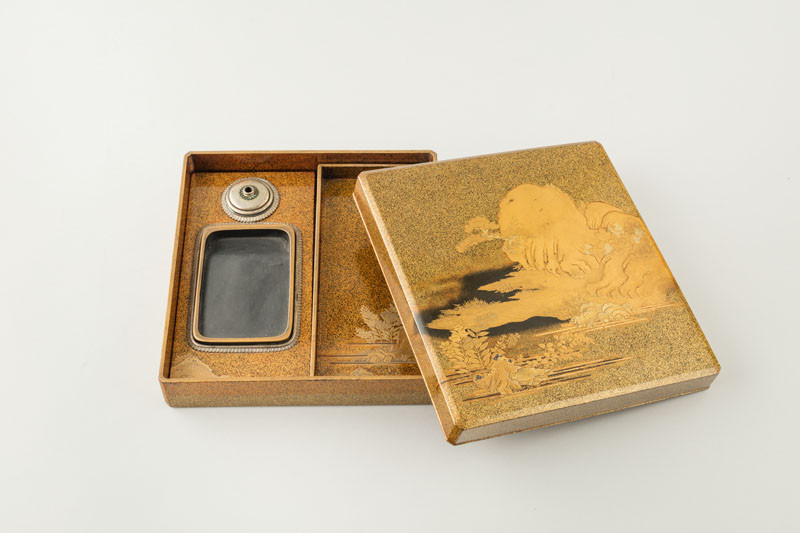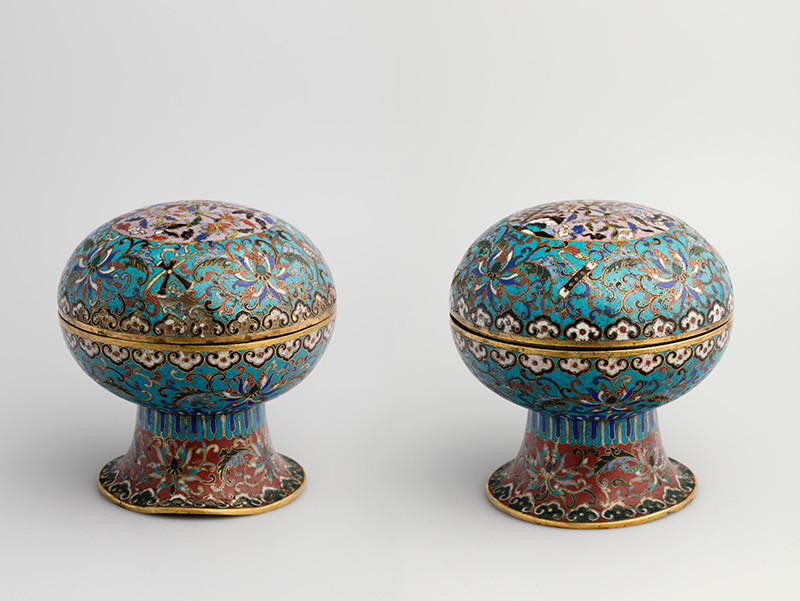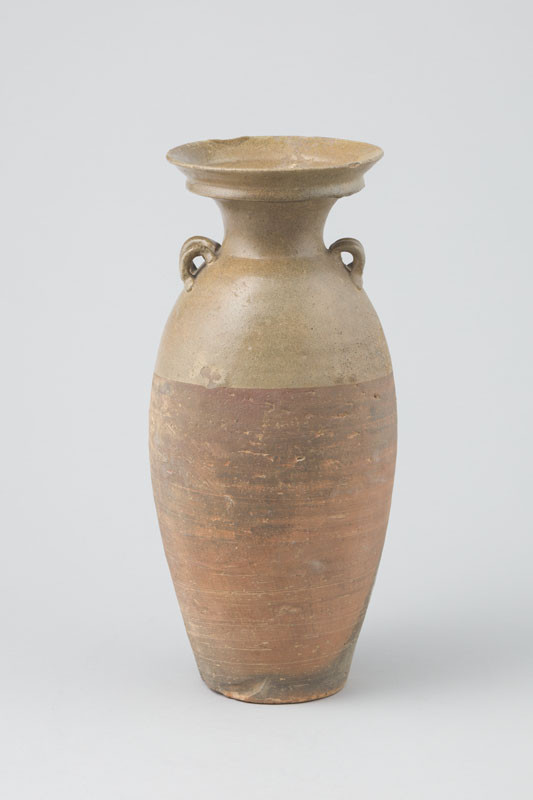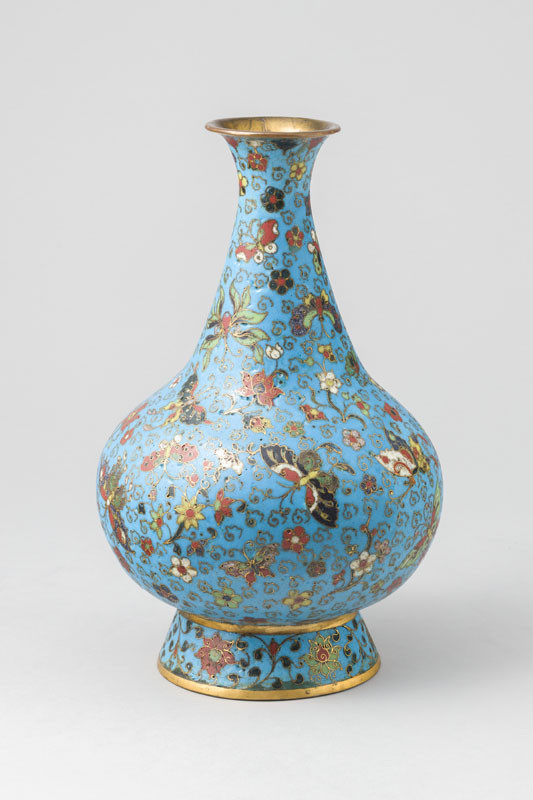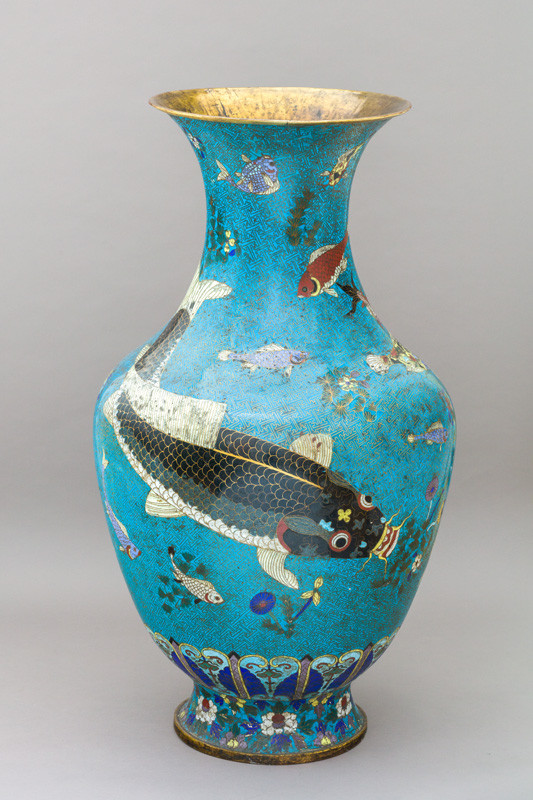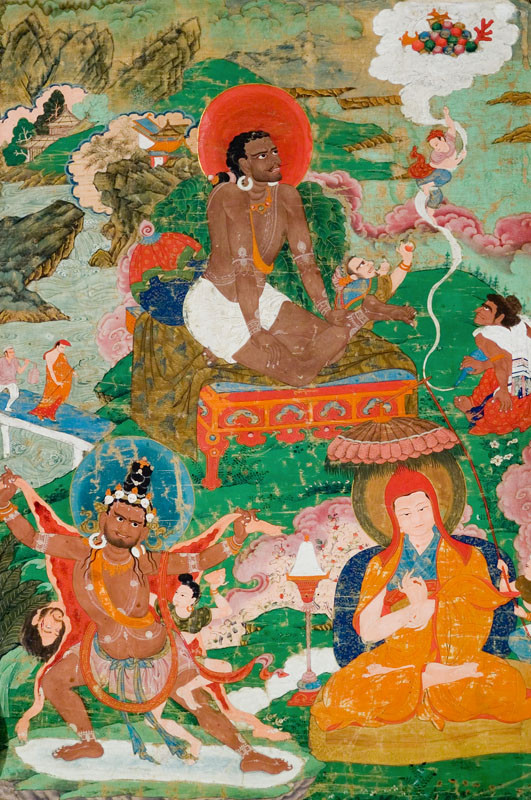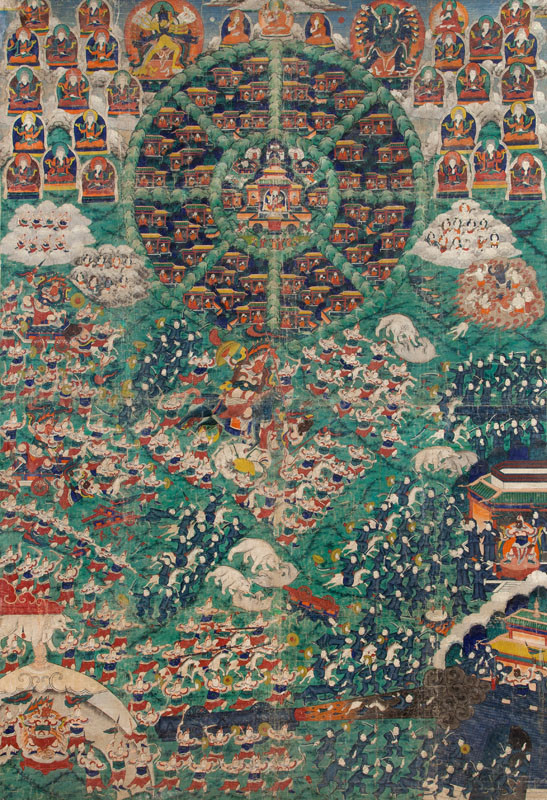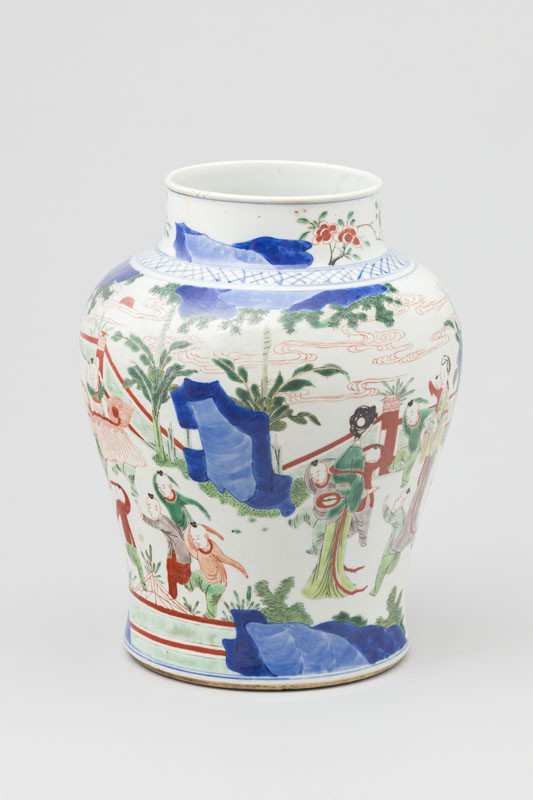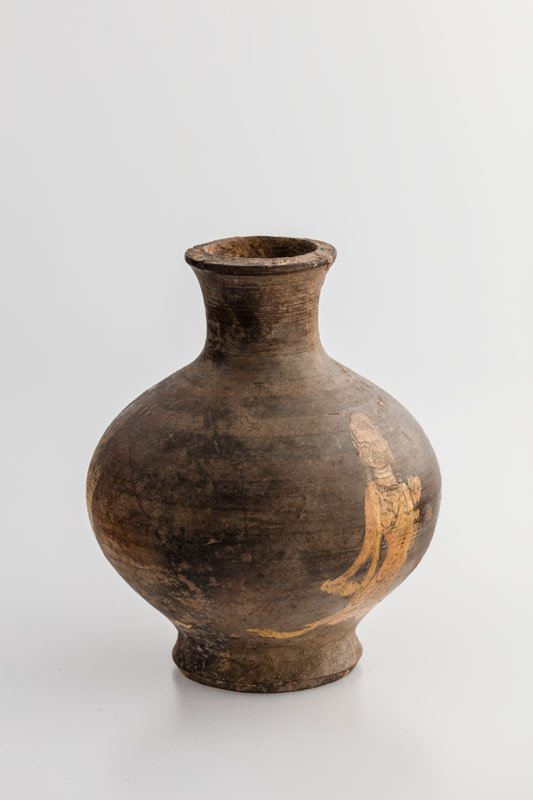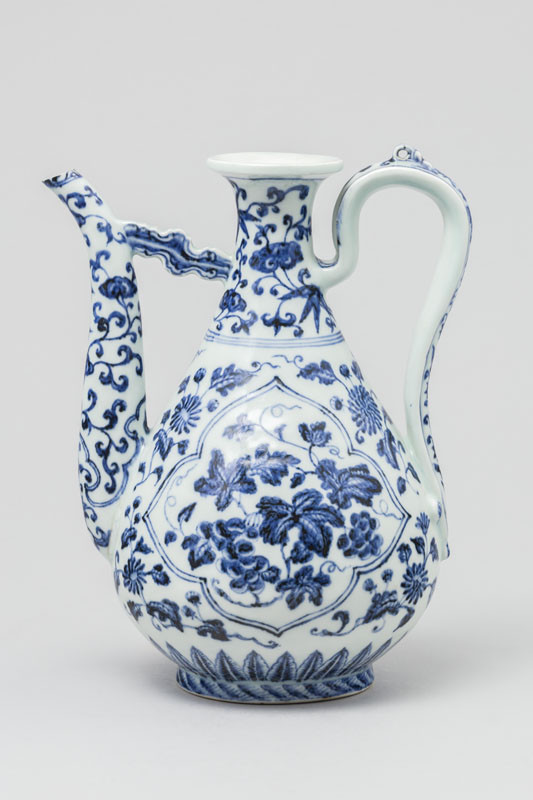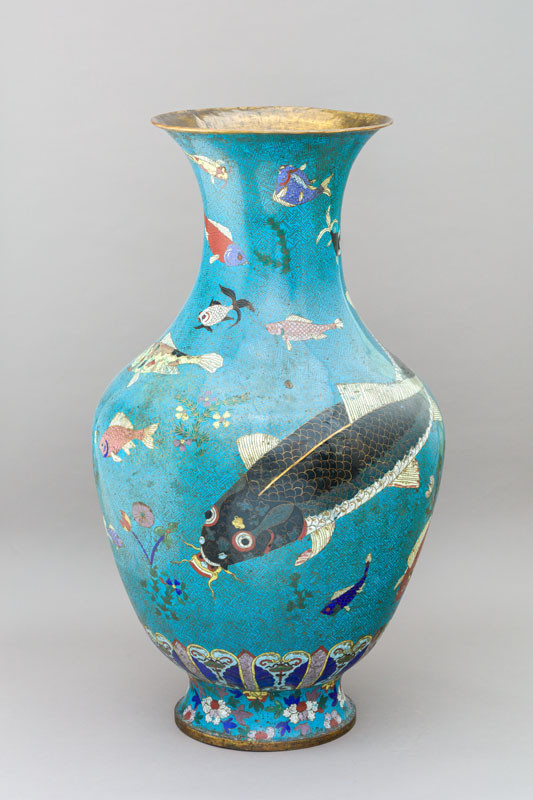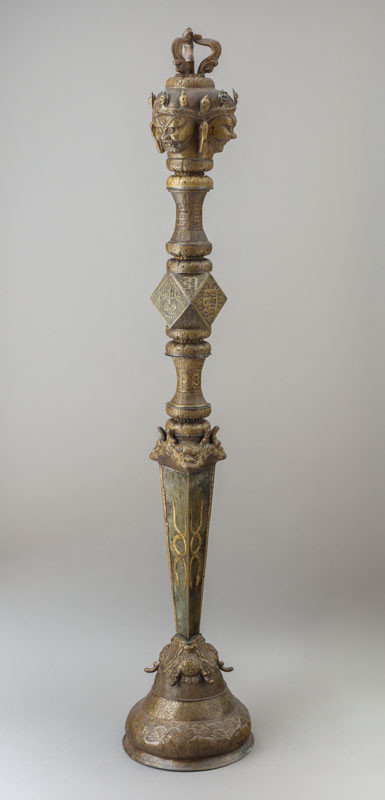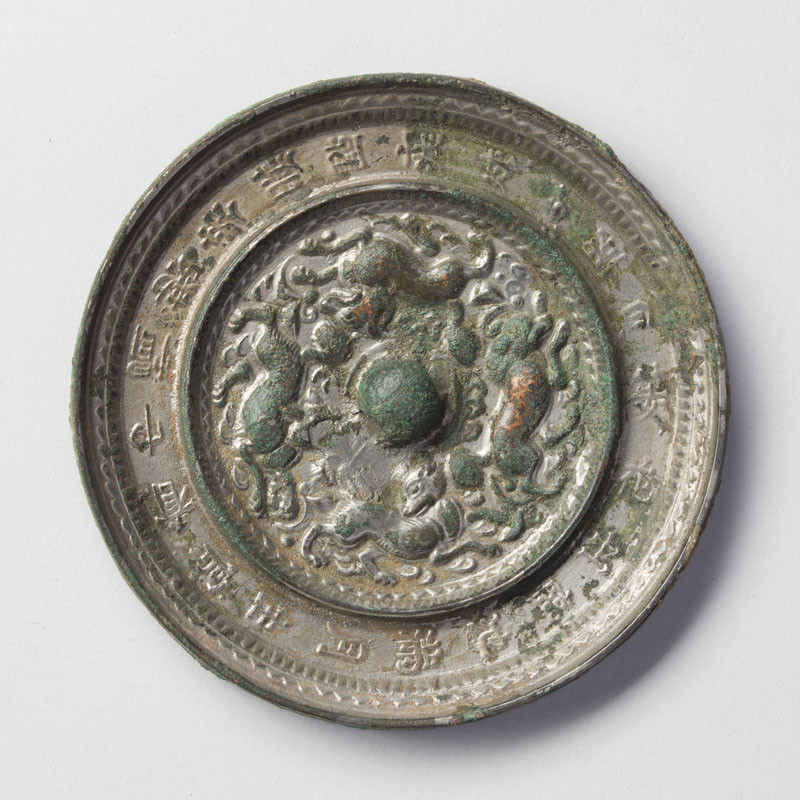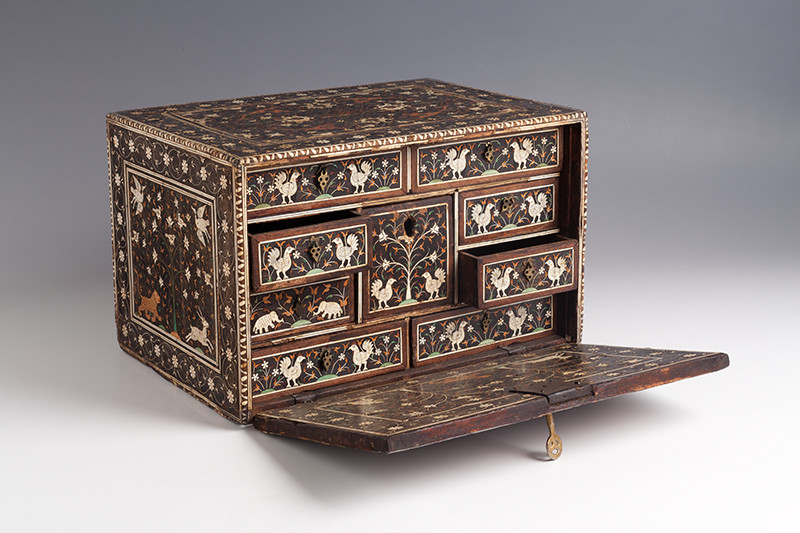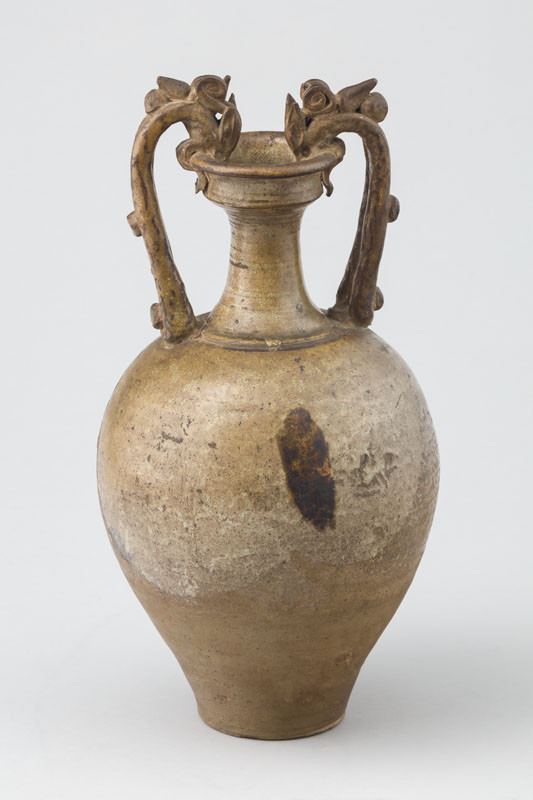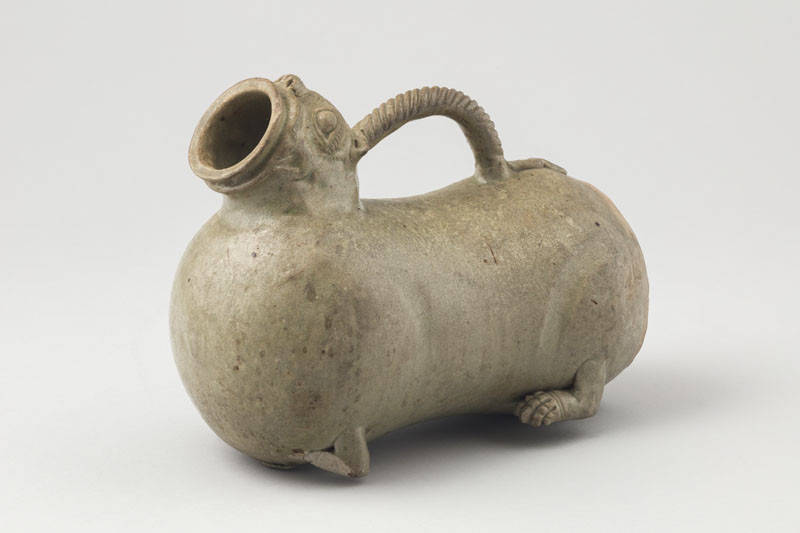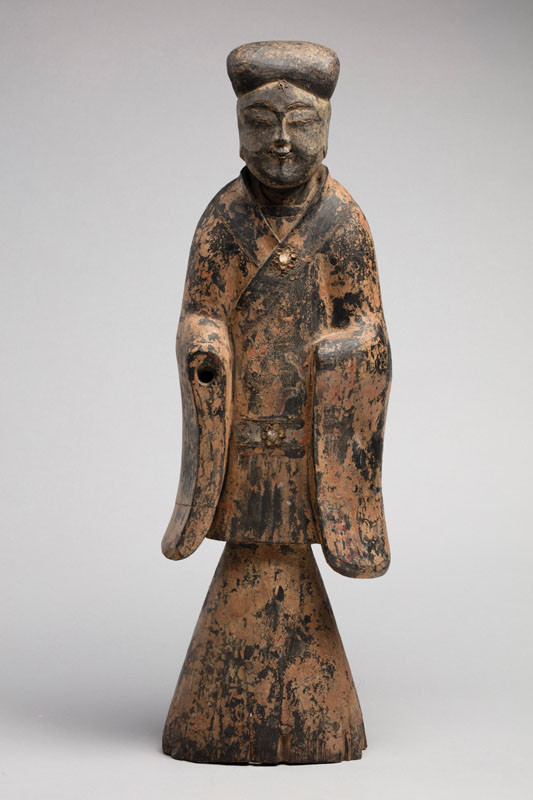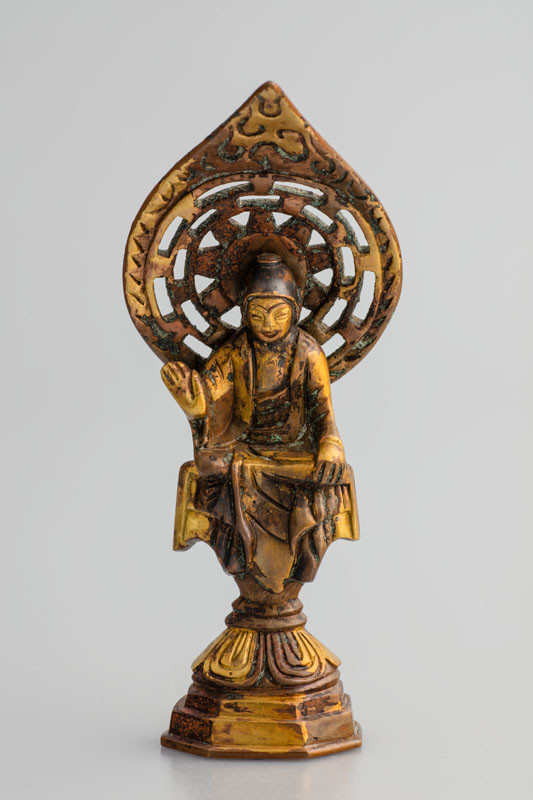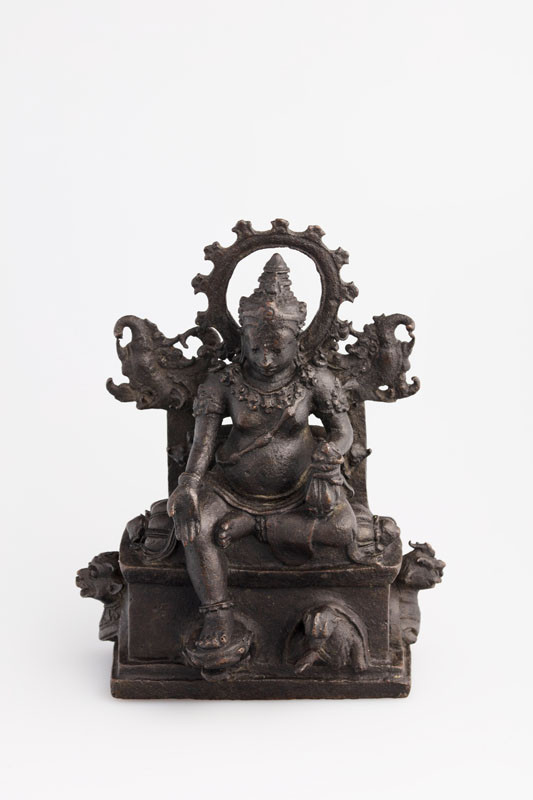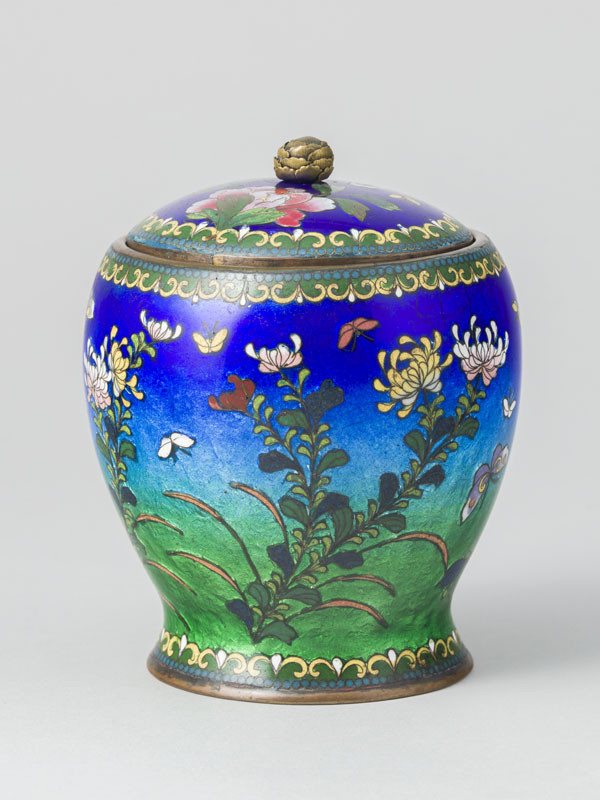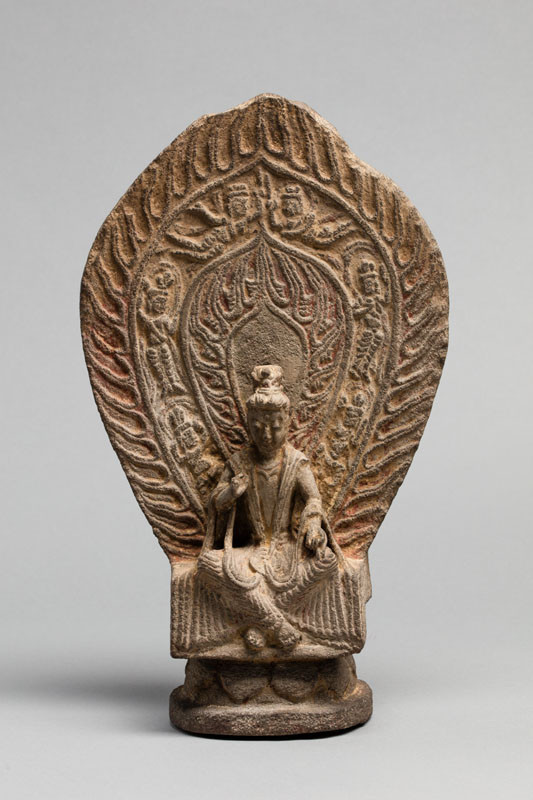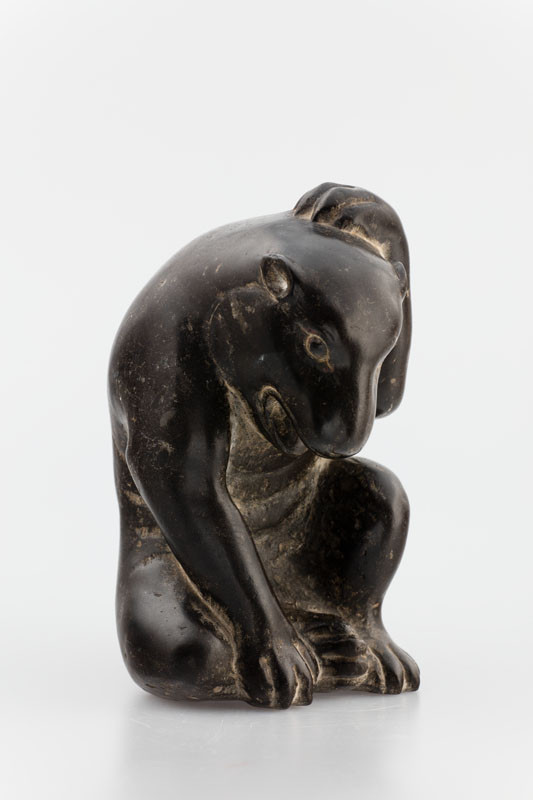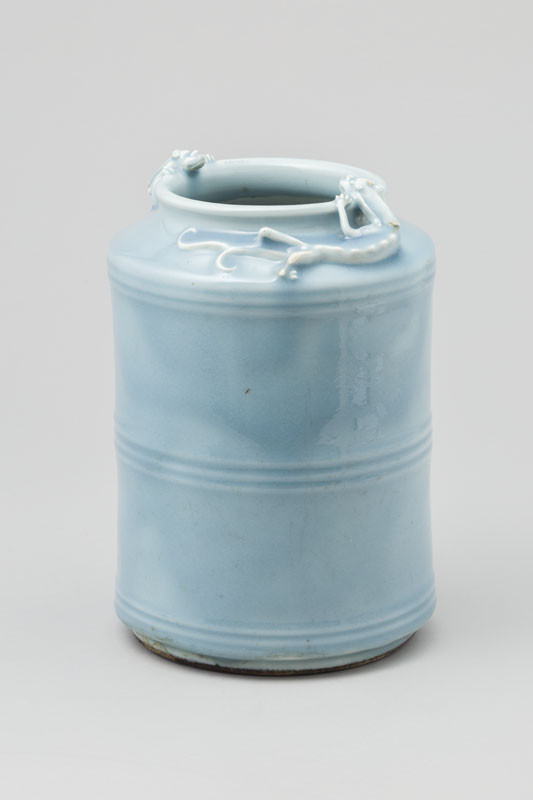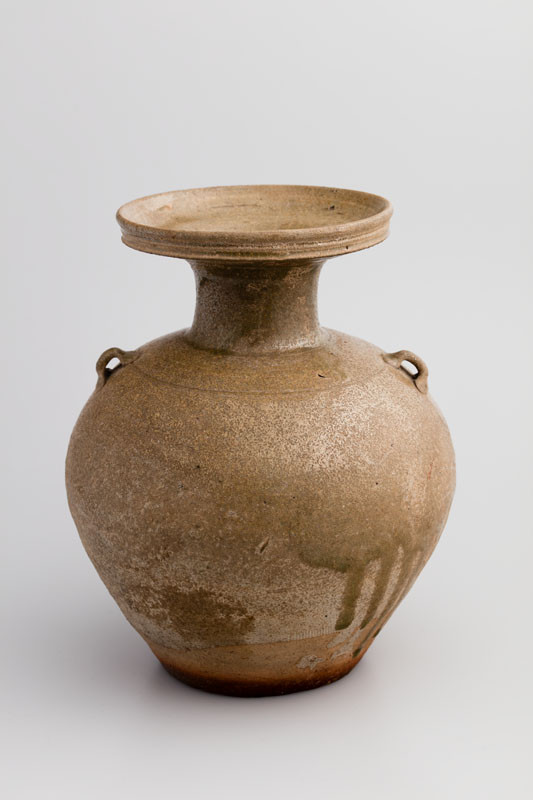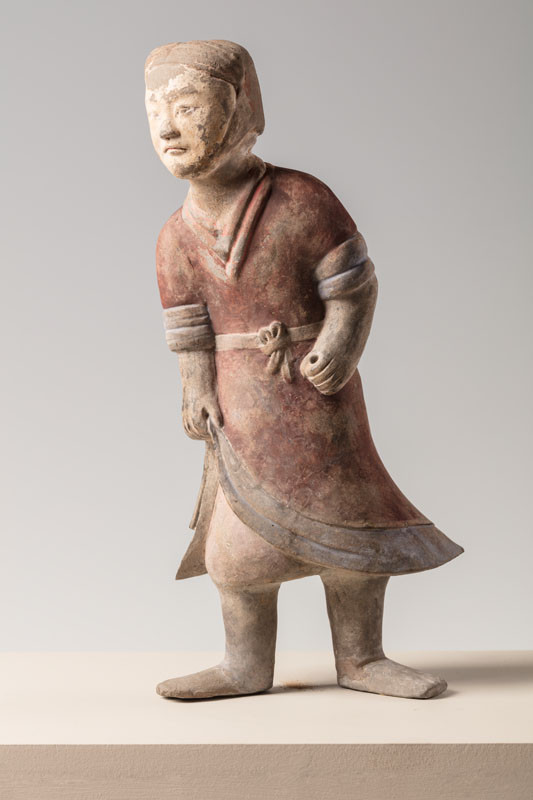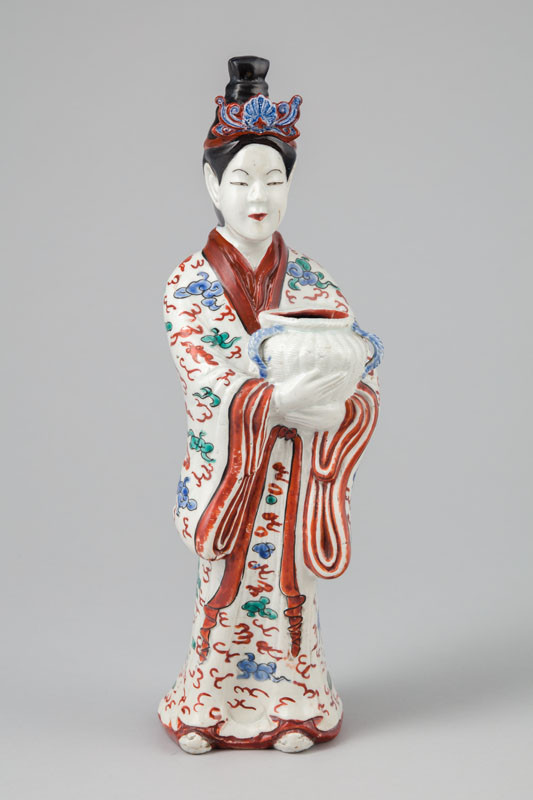
Owing to their refined execution, Kakiemon workshop porcelains became some of the most sought after in the well-known Arita region on the southern part of Kyūshū Island. The Kakiemon family workshop produced blue and white porcelain and porcelain decorated in overglaze colourful enamels, iro-e or aka-e (“painted in colours; painted in red”, respectively). The fine Kakiemon porcelains, whose production peaked in 1670–1690, excelled in the modellation of figures. They were imported to Europe by the Dutch East India Company. Both utility and decorative porcelains were popular, as figures of beauties corroborate. This figure’s face has a rigid expression on a spotless white surface in line with the traditional Japanese makeup. The white surface is only interrupted by the black contour of the eyes and red lips. The beauty’s dress is somewhat exotic and her cloak with a cloud motif recalls the traditional garment of the Ryūkyū Archipelago, today’s Okinawa region.

